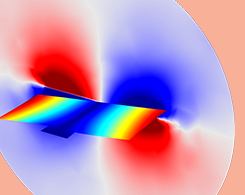Materialmodelle Blog-Beiträge

Modellierung thermomechanischer Ermüdung in COMSOL Multiphysics®
Sie können thermomechanische Ermüdung in COMSOL Multiphysics® analysieren, indem Sie experimentelle Daten aus Ermüdungsversuchen und Materialparameter aus der Literatur verwenden. Ein Gastblogger demonstriert.

Einführung in die numerische Integration und Gauß-Punkte
In diesem umfassenden Blog-Beitrag gehen wir auf die Theorie hinter der numerischen Integration, die Gaußsche Quadratur, Gauß-Punkte, schwache Beiträge und vieles mehr ein.

So modellieren Sie verschiedene Arten der Dämpfung in COMSOL Multiphysics®
Strukturdynamische Analysen können schwierig sein, wenn Sie die Dämpfung berücksichtigen müssen. Hier erfahren Sie, wie Sie die verschiedenen numerischen Dämpfungsmodelle in COMSOL Multiphysics® verwenden können. Teil 2 von 3.

Singularitäten in Finite-Elemente-Modellen: Der Umgang mit den roten Flecken
Sehen Sie rot? Erfahren Sie mehr über die häufigsten Ursachen von Singularitäten in Ihren Finite-Elemente-Modellen und darüber, wann und wie diese zu entfernen sind und wie Sie Ihre Simulationsergebnisse interpretieren können.
